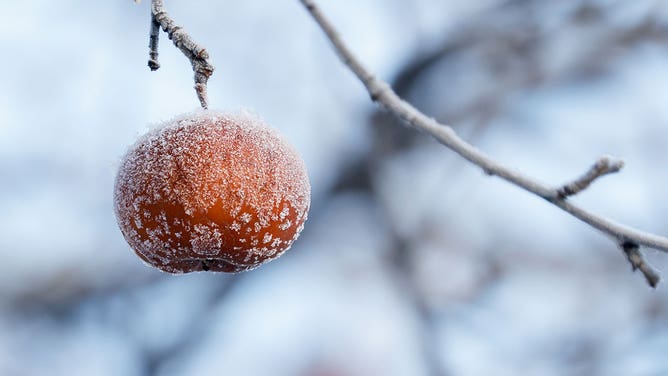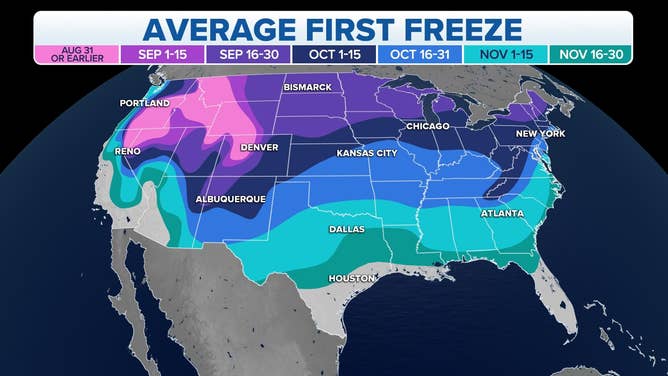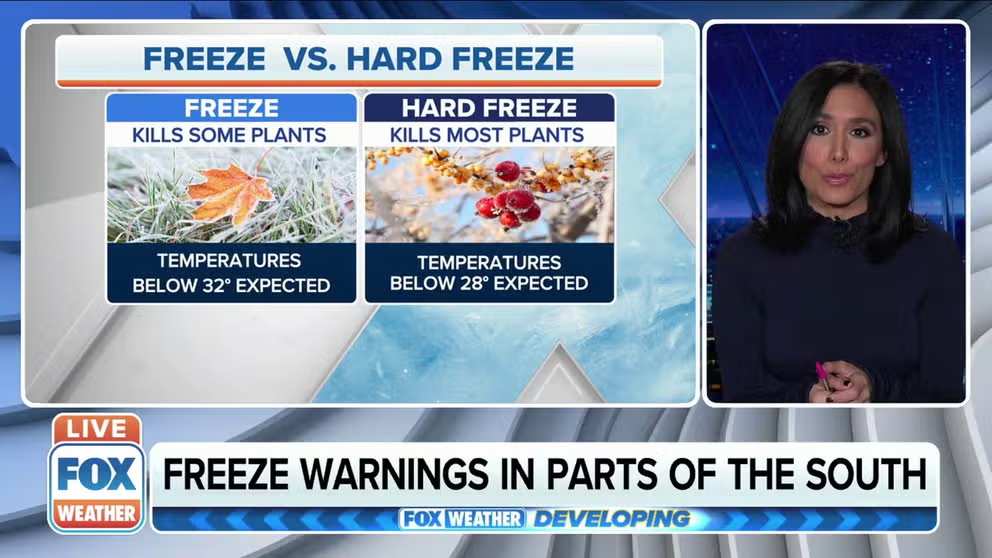What’s the difference between frost, a freeze and a hard freeze?
These definitions are important when it comes to protecting plants and pipes
What is a freeze vs. a hard freeze?
FOX Weather meteorologist Marrisa Torres explains the difference.
People seem to become fixated on freezing weather when fall and winter arrive each year, but not all freezes are created equal.
The National Weather Service has three types of alerts that can be issued whenever temperatures get near or below freezing: frost, freeze and hard freeze.
Here’s a closer look at the differences between these cold-weather categories.
Frost

Ice-covered apple on a tree in a park.
(Mikhail Japaridze\TASS via Getty Images)
Basically, frost is just frozen dew. The droplets on the ground, on the leaves of plants and on other surfaces become frozen whenever temperatures fall into the mid-30s and the winds are calm.
This becomes extremely important for farmers because a long frost can put an end to or delay a growing season. This is usually referred to as a "killing frost."
NEED POLLEN RELIEF? WISH FOR FROST
The NWS will usually issue a frost advisory if the growing season is underway and frost is expected to be widespread.
If a frost advisory is issued, it’s a good idea to cover or bring inside any plants that are sensitive to cold.
Freeze

Most of the United States usually sees their first freeze by mid-November.
(FOX Weather)
It sounds self-explanatory, but the NWS has a specific use for the word freeze. It’s meant to denote when temperatures are at or below 32 degrees and other conditions, such as wind, prevent the formation of frost.
"Killing" can also be used to describe a freeze if temperatures will be at or below freezing for a period long enough during a growing season to kill off crops.
HERE’S WHEN TO EXPECT YOUR FIRST FREEZE OF THE SEASON
A freeze watch or warning will be issued by the NWS when the first freeze happens or when a freeze might happen in the middle of a growing season.
Plants should be covered or brought inside. Pipes are usually OK in this type of weather.
Hard freeze
As the name would indicate, this type of freeze is more serious than a normal freeze. A hard freeze happens when temperatures drop to 28 degrees or lower for an extended period, killing most crops and patio plants. Pipes that aren’t well-insulated may burst.
The NWS will issue a hard freeze watch or warning whenever this type of weather is expected.
Plants should be brought inside. If they can’t be moved, make sure they are covered well. Pipes should also be checked to ensure they are wrapped or insulated well.
